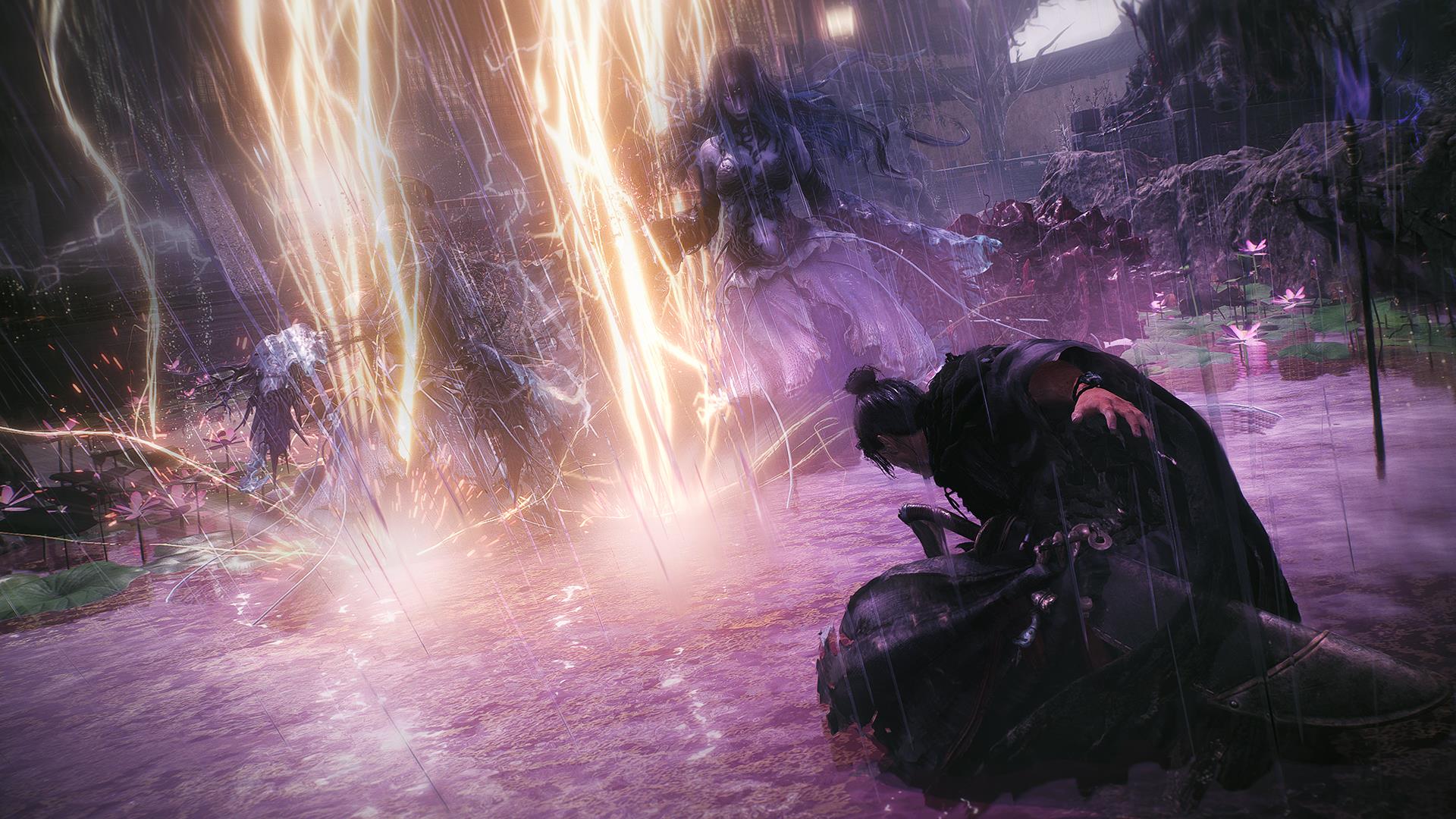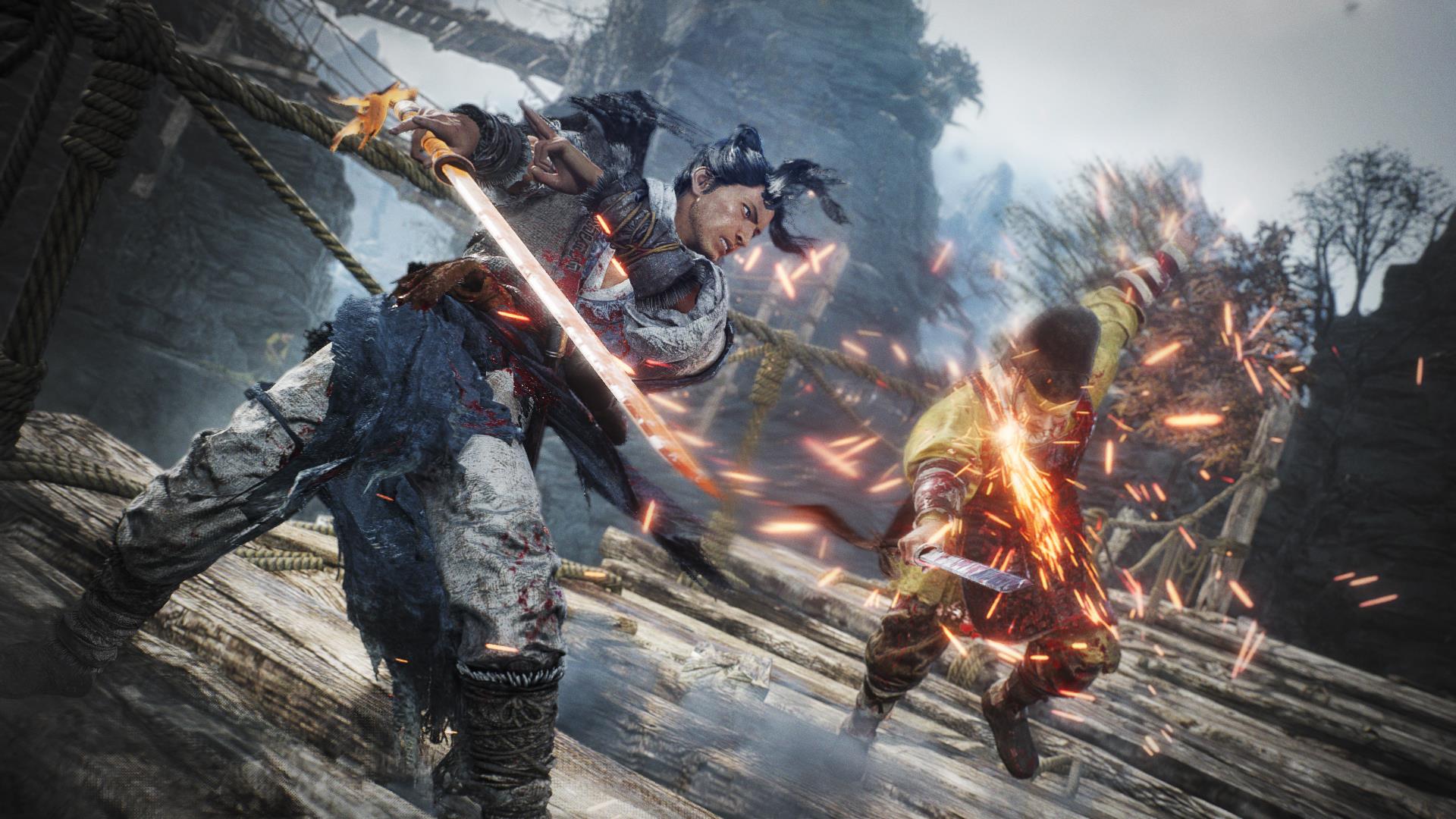Wo Long: Fallen Dynasty is the new action title from Team Ninja and Koei Tecmo (no, not Rise of the Ronin – we’re not going to see that for another few years yet), and in a series of trailers, it demonstrated how it immediately intends to separate itself from the developer’s previous Nioh games. There’s a jump button! There are no stances! You cannot ki pulse! It’s much quicker! It’s set in China instead of Japan! But it’s hard to divine any of what this actually means for the game, really, from trailers – no matter how flashy and well put-together they are. In a hands-on with the game’s first demo, though, I’ve been able to try it all out for myself… and let me tell you, the difference is as vast and important as FromSoftware’s was in the jump from Dark Souls to Bloodborne. First of all, Wo Long is faster. So much faster. Hopping between stances and pacing in circles with your sword levied at your enemy is a thing of the past here – instead, you’re encouraged to crash like waves against the enemies and give them little room for recourse. If they do get an attack in, in between your standard and Martial Arts-powered special moves, you’re given the opportunity to counter. Chinese Martial Arts, after all, embrace the back-and-forth nature between aggression and self-preservation; Wo Long understands and embraces this natural flow. Therein lies the soul of this game: in countering and parrying. Much like Bloodborne, a good defense is based on an incredibly violent and unassailable offense, here. Standard attacks can be parried (with fairly generous timing) and give you the upper hand, which can off enemies in one fell swoop. But more powerful enemies – those that have been corrupted with the power of demons, or demons themselves, even – won’t fall so easily. These more deadly foes are armed with devastating attacks, indicated by an angry red aura and lengthy wind-up time. Being nicely telegraphed, they’re primed for more devastating parries: time it right, and knock them off their feet during these moves, and you’ll deal massive amounts of damage (as well as sever body parts, making the rest of the battle much easier). Targeting, understanding, and responding to these moves makes you feel like a bonafide martial arts action movie star: the camera yanks back, you kick a tiger (or something) to the floor, then you dive in and plunge your sword into its chest, obliterating two of its nasty-ass claws. Whilst you do have a stamina bar, a la the rest of the Soulsbourne genre, it’s tied to your Fortitude – which is something like a mix of morale and stamina. Wizardry (read: spells) will eat into this bar, and if you dodge, guard, dodge, and then blast an expensive spell, your rank will go down as you eat into and overexert your bar. Given that this morale meter is effectively how you differentiate your ‘level’ from that of your enemies, you need to constantly weigh up whether you want to finish a fight with spells and guarantee victory, or reserve your Fortitude for the battles ahead. You lose your ‘souls’ (here, it’s ‘qi’) and fortitude rank with every death, but – surprise, surprise! – you can reclaim anything lost by killing the enemy that killed you in the next run. Keeping your morale high is key: otherwise, you’re making a lot of things much, much harder for you. You may run into a rank 20 miniboss halfway through the level, for example, when you’re level ten. To make sure you can face this bastard again and again (and with a fighting chance), you can explore and plant flags; minor and major standards being raised will demoralise enemies and empower you. Enter the jump button. Any Nioh veteran will know that your yokai-powered warriors from previous games were basically rooted to the floor (unless you were doing some sort of cool samurai kick-and-leap evasive manoeuvre). In Wo Long, jumping is a key part of battle and exploration. In battle, you can use it to get above – then rain down upon – your enemies, but it comes with a risk/reward dynamic. Jump into an attack and you will get swatted out of the air like a feckless insect, time it right, and you can break limbs or interrupt attacks. The jump’s main function, though, is letting you get your proverbial teeth into these gorgeous Chinese levels. Though your jump is more like a small, agile hop, there’s a lot more verticality, and exploration in general, than you’d ever find in Nioh. And that’s for the best, because Wo Long is a linear structured game, similar to Nioh and Ninja Gaiden before that. But with Soulslike games now becoming more insistent on open worlds, I like that: it sets Team Ninja apart from the ever-growing pack, and allows it to really encapsulate tight level design, and show off what you can achieve by collecting enemies, bosses, and certain aspects of level design into one place – before hitting you with something wildly different in the next level. It’s no surprise, really, but Wo Long: Fallen Kingdom is shaping up to be something special; a true action-RPG classic in the making. Team Ninja has taken everything it’s learned from Nioh, studied the genre extensively, and rejected the path most taken. Instead, it’s forging ahead, sticking to its guns, and merely taking samples of the formula that made Elden Ring the biggest game in the world – not copying it outright. The result is something unique, unremittingly brutal, and absolutely stunning. Wo Long: Fallen Kingdom may not be the king of the Soulslikes anytime soon, but it doesn’t care – it wants to be the king of the Team Ninja-likes, instead. Wo Long: Fallen Dynasty is due for release in early 2023 on PC, PS4, PS5, Xbox One, and Xbox Series X/S. It’s a day one Game Pass launch, too. A demo for the game is out now on PS5 and Xbox Series X/S.



